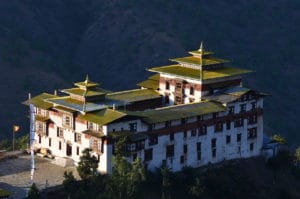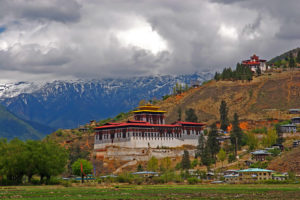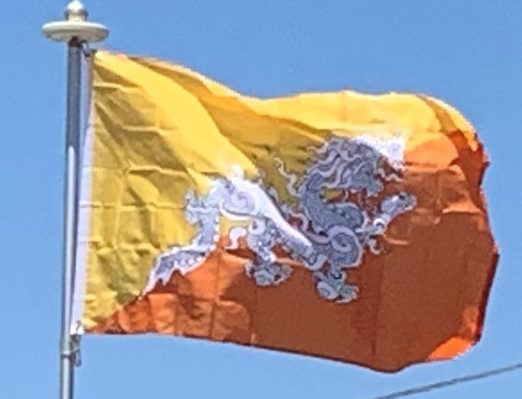
Names similar to Bhutan — including Bohtan, Buhtan, Bottanthis, Bottan and Bottanter — began to appear in Europe around the 1580s. Jean-Baptiste Tavernier’s 1676 Six Voyages is the first to record the name Boutan. However, in every case, these seem to have been describing not modern Bhutan but the Kingdom of Tibet. The modern distinction between the two did not begin until well into the Scottish explorer George Bogle’s 1774 expedition — realizing the differences between the two regions, cultures and states, his final report to the East India Company formally proposed labelling the Druk Desi‘s kingdom as “Boutan” and the Panchen Lama‘s as “Tibet”. The EIC’s surveyor general James Rennell first anglicized the French name as Bootan and then popularized the distinction between it and greater Tibet.
Locally, Bhutan has been known by many names. One of the earliest Western records of Bhutan, the 1627 Relação of the Portuguese Jesuits Estêvão Cacella and João Cabral, records its name variously as Cambirasi (among the Koch Biharis), Potente, and Mon (an endonym for southern Tibet). The first time a separate Kingdom of Bhutan appeared on a western map, it did so under its local name as “Broukpa”. Others including Lho Mon (“Dark Southland”), Lho Tsendenjong (“Southland of the Cypress”), Lhomen Khazhi (“Southland of the Four Approaches”) and Lho Menjong (“Southland of the Herbs”).
History:
Early History:
Stone tools, weapons, elephants, and remnants of large stone structures provide evidence that Bhutan was inhabited as early as 2000 BC, although there are no existing records from that time. Historians have theorized that the state of Lhomon (literally, “southern darkness”), or Monyul (“Dark Land”, a reference to the Monpa, the aboriginal peoples of Bhutan) may have existed between 500 BC and AD 600. The names Lhomon Tsendenjong (Sandalwood Country), and Lhomon Khashi, or Southern Mon (country of four approaches), have been found in ancient Bhutanese and Tibetan chronicles.
Buddhism was first introduced to Bhutan in the 7th century AD. Tibetan king Songtsän Gampo (reigned 627–649), a convert to Buddhism, who actually had extended the Tibetan Empire into Sikkim and Bhutan, ordered the construction of two Buddhist temples, at Bumthang in central Bhutan and at Kyichu (near Paro) in the Paro Valley. Buddhism was propagated in earnest in 746 under King Sindhu Rāja (also Künjom; Sendha Gyab; Chakhar Gyalpo), an exiled Indian king who had established a government in Bumthang at Chakhar Gutho Palace.

Much of early Bhutanese history is unclear because most of the records were destroyed when fire ravaged the ancient capital, Punakha, in 1827. By the 10th century, Bhutan’s political development was heavily influenced by its religious history. Various subsects of Buddhism emerged that were patronized by the various Mongol warlords. After the decline of the Yuan dynasty in the 14th century, these subsects vied with each other for supremacy in the political and religious landscape, eventually leading to the ascendancy of the Drukpa Lineage by the 16th century.
